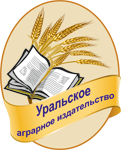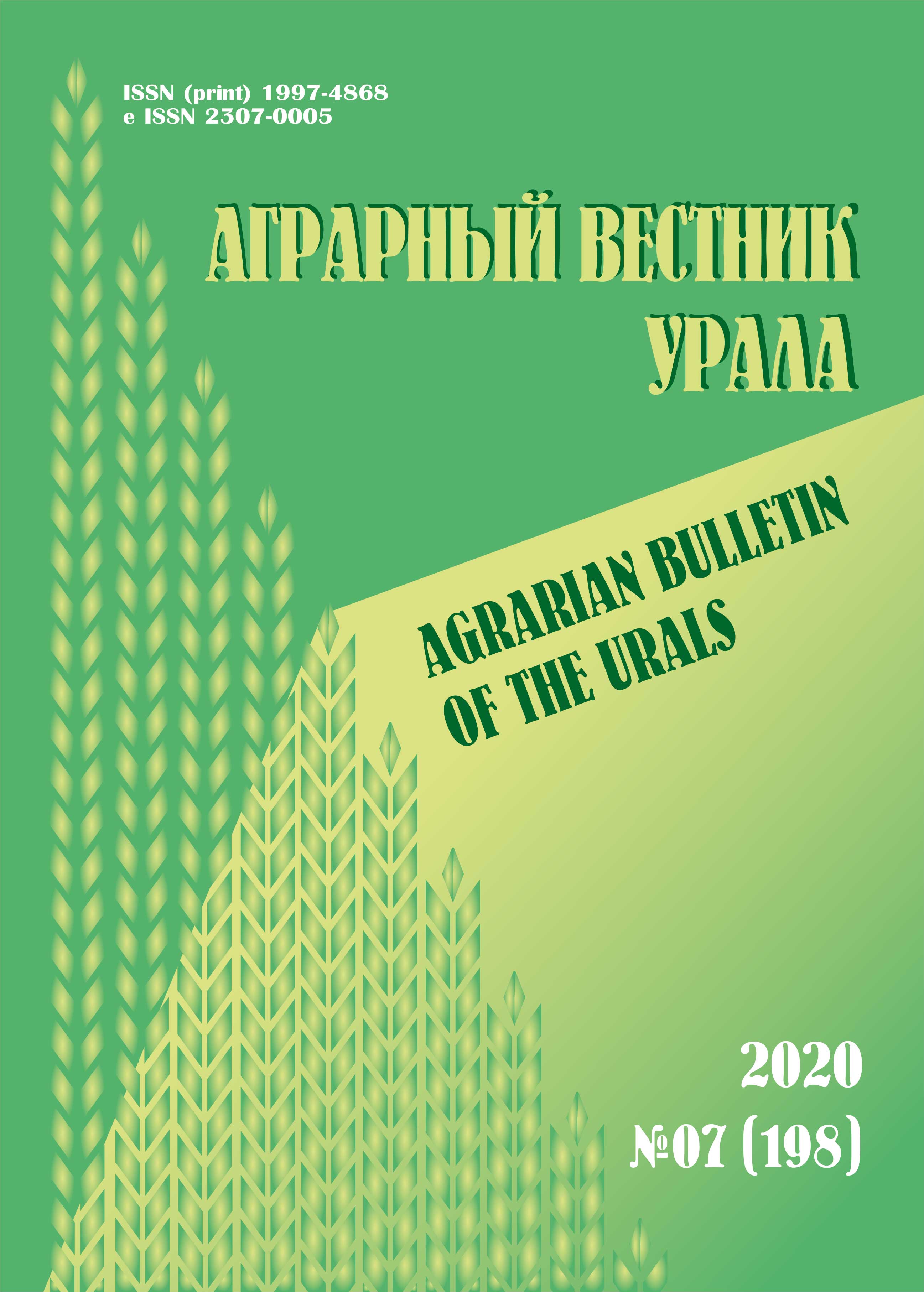Abstract. Cattle meat is a popular food product for the population of the Northwestern region, while there is a need to increase its production. The use of digital technologies allows small farms to compete with large beef producers. The purpose of this study is to identify the specific features of the development of beef cattle breeding in the North-West in small-scale farms in the conditions of digitalization. Methods. Methods of socio-economic analysis, graphical, computational and analytical methods, and a systematic approach were used in the study. Results. The approaches of agricultural scientists to solving the issue of beef production in small farms are systematized. Various forms of interaction between the owners of these farms, including cooperation, are considered. The graphically organizational scheme of the current agricultural consumer cooperative for fattening cattle is presented, as well as other examples of successful cooperative relationships that can be used in the creation of cooperatives. The features of the Northwestern Federal District that can be used for the development of beef cattle breeding in small-scale farms have been identified. The significant role of peasant (farm) economy (P(F)E) and individual entrepreneurs (IE), as well as households of the population (HP) in beef production in the Northwestern Federal District in 2017–2021 has been clarified. It is established that the recommended rational rate of beef consumption is not provided by its own production in any subject of the Northwestern Federal District and in the Russian Federation as a whole. The key points of digitalization of small-scale farms producing cattle meat are presented graphically in the form of a diagram. The main reasons hindering the introduction of digital technologies in small-scale cattle farms are identified, and ways to accelerate this process are proposed. Scientific novelty. It is revealed that farms of small forms of the Northwestern Federal District have unrealized potential for the cultivation of beef cattle, which can be realized with the availability of a system of state support, the development of partnerships in various forms, including cooperation and the introduction of digital technologies.
beef cattle breeding, Northwestern region, digital technologies, digitalization, small-scale farms, cooperation, potential, state support
1. Kostyaev A. I., Nikonova G. N. Vliyanie otrasley zhivotnovodstva na razvitie sel'skih territoriy // Agrarnaya nauka Evro-Severo-Vostoka. 2021. T. 22. № 4. S. 608-619. DOI:https://doi.org/10.30766/2072-9081.2021.22.4.608-619. EDN: https://elibrary.ru/CDGGQG
2. Surovcev V. N. Perspektivy i faktory razvitiya semeynyh K(F)H v epohu perehoda sel'skohozyaystvennogo proizvodstva k «Industrii 4.0» // APK: ekonomika, upravlenie. 2022. № 1. S. 57-64. DOI:https://doi.org/10.33305/221-57. EDN: https://elibrary.ru/VEDLNA
3. Dibirov A. A., Dibirova KH. Prospects and problems of digitalizattion of the agricultural economy // Agriculture digitalization and organic production. Series “Smart Innovation, Systems and Technologies”. 2022. Vol. 245. Pp. 207-220. EDN: https://elibrary.ru/RZLYTX
4. Dibirov A. A. Rol' cifrovizacii v razvitii APK i sel'skih territoriy regiona // Ekonomika sel'skogo hozyaystva Rossii. 2022. № 11. S. 37-45. DOI:https://doi.org/10.32651/2211-37. EDN: https://elibrary.ru/LLWUKJ
5. Smirnova V. V. Strategiya razvitiya myasnogo skotovodstva v Severo-Zapadnom regione Rossii // Effektivnoe zhivotnovodstvo. 2018. № 5. S. 39-41. EDN: https://elibrary.ru/VLKBWN
6. Bashmachnikov V. F., Frolova E. Yu. Razvitie proizvodstva moloka i myasa krupnogo rogatogo skota v lichnyh podsobnyh i fermerskih hozyaystvah v ramkah kooperativnyh sistem // Fundamental'nye i prikladnye issledovaniya kooperativnogo sektora ekonomiki. Nauchno-teoreticheskiy zhurnal. 2020. № 3. S. 85-95. DOI: https://doi.org/10.37984/2076-9288-2020-3-85-95; EDN: https://elibrary.ru/EFVUMD
7. Bashmachnikov V. F. [i dr.] Fermerstvo semeynogo tipa: potencial, praktika razvitiya: monografiya. T. 2. Moskva: OOO «Breyn Print», 2022. 470 s.
8. Ozherel'ev V. N., Ozherel'eva M. V., Kisten' T. N. Perspektivy kooperirovaniya fermerov i krupnyh agroholdingov v myasnom skotovodstve Rossii // Ekonomika sel'skohozyaystvennyh i pererabatyvayuschih predpriyatiy. 2014. № 9. S. 17-19. EDN: https://elibrary.ru/SNOCAR
9. Dusaeva E. M., Kurmanova A. H. Preimuschestva myasnogo skotovodstva v novyh paradigmah razvitiya // Zhivotnovodstvo i kormoproizvodstvo. 2018. T. 101. № 2. S. 112-120. EDN: https://elibrary.ru/XZCKPZ
10. Dusaeva E. M. Myasnoe skotovodstvo v fermerskih hozyaystvah: vzglyad v buduschee // Myasnoe skotovodstvo - prioritety i perspektivy razvitiya: materialy mezhdunarodnoy nauchno-prakticheskoy konferencii. - Orenburg: Izd-vo FNC BST RAN, 2018. S. 47-53. EDN: https://elibrary.ru/UWYARC
11. Usmanova E. N., Kuzyakina L. I. Opyt razvedeniya myasnogo skota v shtate Virginiya (SShA) // Molochnoe i myasnoe skotovodstvo. 2017. № 6. S. 18-21. EDN: https://elibrary.ru/ZSIEQD
12. Sidorova V. Yu. Sovremennoe sostoyanie otrasli myasnogo zhivotnovodstva v zapadnyh stranah i perspektivy ego razvitiya v Rossiyskoy Federacii // Povyshenie konkurentosposobnosti zhivotnovodstva i zadachi kadrovogo obespecheniya: materialy XXV mezhdunarodnoy nauchno-prakticheskoy konferencii. Podol'sk, 2019. S. 34-39. EDN: https://elibrary.ru/HORRZX
13. Sidorova V. Yu. Sovremennye cifrovye sistemy v myasnom skotovodstve zapadnyh stran i ih osobennosti // Tehnika i tehnologii v zhivotnovodstve. 2021. № 3 (43). S. 38-42. DOI: https://doi.org/10.51794/27132064-2021-3-38; EDN: https://elibrary.ru/CSVLWN
14. Dezhina I. G. [i dr.] Tehnologicheskaya transformaciya myasnogo i molochnogo skotovodstva. Analiticheskiy doklad. Moskva: Izdatel'stvo «Sputnik+», 2022. 234 s. EDN: https://elibrary.ru/FSPUPO
15. Buklagin D. S. Cifrovye tehnologii upravleniya sel'skim hozyaystvom // Mezhdunarodnyy nauchno-issledovatel'skiy zhurnal. 2021. № 2 (104). Ch. 1. S. 136-144. DOI:https://doi.org/10.23670/IRJ.2021.103.2.026. EDN: https://elibrary.ru/XIAMAC
16. Buklagin D. S. Cifrovye tehnologii i sistemy upravleniya v zhivotnovodstve // Tehnika i tehnologii v zhivotnovodstve. 2020. № 4 (40) S. 105-112. EDN: https://elibrary.ru/JVDBBI
17. Rahimova E. A. Podhody k formirovaniyu nauchnyh osnov cifrovizacii krest'yanskih (fermerskih) hozyaystv Leningradskoy oblasti // APK: ekonomika, upravlenie. 2022. № 12. S. 32-40. DOI:https://doi.org/10.33305/2212-32. EDN: https://elibrary.ru/SIWBEP
18. Miroshnikov S. A. Razvitie myasnogo skotovodstva Rossii: innovacionnyy ili tradicionnyy put' // Innovacionnoe razvitie APK v Rossii: materialy mezhdunarodnoy nauchno-prakticheskoy konferencii, posvyaschennoy 85-letiyu FGBNU Vserossiyskogo NII myasnogo skotovodstva. Orenburg, 2015. S. 3-6.
19. Kostyuk R. Paradoks myasnogo skotovodstva // Zhivotnovodstvo Rossii. 2022. № 7. S. 54-57. EDN: https://elibrary.ru/UJKLBV
20. Sovetova N. P. Cifrovizaciya sel'skih territoriy: ot teorii k praktike // Ekonomicheskie i social'nye peremeny: fakty, tendencii, prognoz. 2021. T. 14. № 2. S. 105-124. DOI:https://doi.org/10.15838/esc.2021.2.74.7. EDN: https://elibrary.ru/QAWQTU
21. Kosogor S. Transformaciya sel'skogo hozyaystva: cifrovye vozmozhnosti razvitiya // Sistemy bezopasnosti. 2022. № 3. S. 27-29.
22. Belaya A. Konec ruchnogo upravleniya. Kakie cifrovye tehnologii vnedryayutsya na zhivotnovodcheskih predpriyatiyah [Elektronnyy resurs] // Agroinvestor. 2020. № 3. URL: https://www.agroinvestor.ru/animal/article/33325-konets-ruchnogo-upravleniya-kakie-tsifrovye-tekhnologii-vnedryayutsya-na-zhivotnovodcheskikh-predpri (data obrascheniya: 28.09.2022).
23. Proizvodstvo produkcii zhivotnovodstva v Rossiyskoy Federacii (pereschitannye dannye s uchetom itogov VSHP 2016) [Elektronnyy resurs]. URL: https://rosstat.gov.ru/compendium/document/13277 (data obrascheniya: 03.10.2022).
24. Proizvodstvo produkcii zhivotnovodstva v Rossiyskoy Federacii v 2019 godu [Elektronnyy resurs]. URL: https://rosstat.gov.ru/compendium/document/13277 (data obrascheniya: 03.10.2022).
25. Proizvodstvo produkcii zhivotnovodstva v Rossiyskoy Federacii v 2021 godu [Elektronnyy resurs]. URL: https://rosstat.gov.ru/compendium/document/13277 (data obrascheniya: 03.10.2022).
26. Prikaz Ministerstva zdravoohraneniya RF «Ob utverzhdenii rekomendaciy po racional'nym normam potrebleniya pischevyh produktov, otvechayuschih sovremennym trebovaniyam zdorovogo pitaniya» ot 19.08.2016 g. [Elektronnyy resurs]. URL: http://www.garant.ru/products/ipo/prime/doc/71385784 (data obrascheniya: 05.10.2022).
27. Chislennost' postoyannogo naseleniya v srednem za god [Elektronnyy resurs]. URL: https://rosstat.gov.ru/folder/12781 (data obrascheniya: 03.10.2022).
28. Koropec O. A., Tuhtarova E. H. Vliyanie peredovyh tehnologiy Industrii 4.0 na bezraboticu v rossiyskih regionah // Ekonomika regiona. 2021. T. 17. Vyp. 1. S. 182-196. DOI:https://doi.org/10.17059/ekon.reg.2021-1-14. EDN: https://elibrary.ru/NIMJPE









